Your DIY skills are only as good as the tools you have. This means that if you want to be good at being a home handyman, you’ll need the best tools you can buy. There are many tools that you will need in DIY projects such as drills, screwdrivers but one of the essential ones that should be in your garage right is the circular saw.
And you’d think buying one would be simple enough, right? Well, wrong! With the multitude of options, we’ve found that a lot of DIYers make the expensive mistake of buying the wrong one. If you want help in finding the right circular saw that suits your needs, we’ve got a guide that can read below. But if you haven’t the time to figure things out and just need the good circular saws in the market to choose from, we’ve got you covered too.
So, which saws are a cut above the rest? Scroll down to find out the 10 best circular saws.
Top 10 Circular Saws Of 2020 Reviewed
1. Rockwell RK3440K Versacut 4.0 Amp Ultra-Compact Circular Saw
 Best Circular Saw for The Money
Best Circular Saw for The Money
The Rockwell RK3440K Versacut is a powerful 4.0 amp circular saw that features an ergonomically balanced design, rear-motor construction, and a slip grip handle so you can easily guide your saw with just one hand and feel less fatigue while doing so. It has a built-in laser guide for increased accuracy, a 120-inch cord, and a lock-off switch that prevents the saw from getting accidentally switched on.
You can easily change the cut depth of your saw with the lever. And due to its compact size, this saw can easily work in tight areas. There’s even a dust extraction adapter to keep the dust away from your face and your workpiece clean. The motor is backed by a two-year warranty. You also get a bag to keep your saw in and help you lug it around. However, it doesn’t have a bevel adjustment so you can’t cut 45-degree angles which may limit what some can do with this saw.
It has a maximum cutting depth of 1 1/16 inches which also limits its use to projects that feature sheet materials. Also, the spring-loaded plate that helps ensure safety is not that practical when you’re using the saw. Having to press down on the saw to depress the plate and expose the blade while pulling the trigger can be a bit awkward.
Pros:
- Good for tight spaces
- Built-in laser guide
- Comes with a bag
Cons:
- Does not cut 45-degree angles
- Short depth of cut
- Slightly hard to use for some
2. WORX WX429L
 Best Economy Circular Saw
Best Economy Circular Saw
The Worx WX429L is another easily maneuverable compact saw. It comes with a parallel guide to help you make straight, precise cuts quickly. The bevel adjustment allows you to make a wide variety of cuts. And the easy-set depth gauge lever allows quick adjustments of up to 2 inches.
The saw can be operated one-handed, weighs less than 5 lbs, and has a left-handed blade design so you can easily see the cut-line. The blade is thin to decrease tool strain. The safety trigger is integrated with the grip to provide you with both comfort and control. This saw is also great for tight spaces and for smaller, light jobs. However, it doesn’t perform well on long cuts. The handle isn’t comfortable for small hands.
Pros:
- Easy to use
- Great for tight spaces
- Cuts great
Cons:
- Not for heavy jobs
- Bogs down on long cuts
- The handle is not comfortable for small hands
3. DEWALT DCS391B 20-Volt MAX Li-Ion Circular Saw
 Best Cordless Circular Saw
Best Cordless Circular Saw
The Dewalt DCS391B is the best cordless circular saw you’ll ever find. It features a powerful 5250 RPM motor, a magnesium shoe, a 0-50°(degree) bevel capacity, a 6.5-inch carbide-tipped blade, and optimized rubber over-molded comfort grip. Now, this is a lightweight circular saw (only 2lbs) so it won’t tire out your arm. It can cut various wood materials with ease. It has an electric brake for safety.
Adjustments are easy to do. There are certain drawbacks to using this saw, however. It’s more expensive than other models and, since it is battery-powered, you’re bound to lose power at some point. Possibly after 30 to 45 minutes of continuous cutting. If you’re taking this to a job site, you’re going to need an extra battery pack or two unless you want to wait around while it’s recharging. By the way, this comes without a battery so you’ll definitely be buying at least two.
Pros:
- Powerful cordless model
- Perfect for confined spaces
- Very lightweight
Cons:
- Only 30-45 minutes of continued use
- For light to medium duty only
- Battery not included
4. DEWALT DWE575SB 7-1/4-Inch Lightweight Circular Saw
 Best Entry Level Circular Saw
Best Entry Level Circular Saw
If a corded model is more your thing, this 7-1/4-inch lightweight circular saw from Dewalt just might be what you need. Unlike the other two we’ve previously discussed, this one does not have a slim design, though it is compact. This sidewinder features an electric brake for safety as well as a ball bearing lower guard and a high grade stamped aluminum shoe for durability.
It comes with an integrated dust blower to keep the cutline visible. The cord features a patented tough protection system which ensures that it’s 3x less likely to experience cord pull-out compared to other cords. There’s an onboard blade wrench storage so you can easily change blades without having to look through all your tools or try to remember where you last placed it.
Other features you might be interested in is a 57-degree bevel capacity with bevel stops at 22.5 and 45 degrees and a 2 9/16-inch depth of cut capacity. The max watts out is 1950 watts, the load speed is 5200 RPM, and the power is 15 amps. Unfortunately, there are flaws. The electric brake doesn’t always engage. The dust blower is a little too powerful that it makes cleaning up the garage a problem. And it’s very loud (requiring earplugs) which could be a pro for some.
Pros:
- Very powerful
- On-board blade wrench storage
- Patented tough cord protection system
Cons:
- Very loud
- Dust blower scatters the dust to all corners of your shop
- Electric brake does not always work
5. BLACK+DECKER BDCCS20B
The Black+Decker BDCCS20B is a cordless, battery-powered general purpose circular saw that can also be utilized as a trim saw. One unique thing about this is that the blade is located on the left side which is something that lefties will love. The saw is quite compact at 5.5 inches with a thin but high-quality blade.
Adjusting the blade is done through a basic level that is easy enough to understand and operate. What makes this standout among other cordless models is the fact that it shares battery packs with other models under this brand. You don’t necessarily need to buy a new one if you’ve got a battery pack lying around from one of your other equipment. However, the power delivered by the 20V battery is lacking that “oomph” required to perform heavy duty jobs. The blade that comes with the saw isn’t sharp enough so you’ll need to replace it if you want smoother cuts.
Pros:
- Adjustable depth of cut and angle of cut
- Compatible with battery packs from other Black+Decker saws
- Left side blade
Cons:
- Not for medium to heavy duty projects
- Blade isn’t sharp
- Drains battery fast
6. SKIL 5280-01 15-Amp 7-1/4-Inch Circular Saw
The SKIL 5280-01 15-Amp 7-1/4-Inch Circular Saw features a 15a 2.5 HP motor is one of the most powerful in this category. Unlike the others we’ve listed so far, this is ideal for heavy-duty projects and professionals. Despite the power it produces, this saw is one of the lightest (in this category) and easiest to use. The saw had a laser guide and a dust blower to increase accuracy as well as a guarded trigger and spindle lock button for safety. A storage slot in the saw can keep your hex wrench nearby for quick blade changes.
The depth of cut is at 2-3/8 in inches while the 51-degree bevel has positive stops at 45 degrees. There are disadvantages to using this machine. The cord is just 6 feet long. While it’s nothing to scoff at, it’s a little on the short side compared to other models. It also does not feature an electric brake as well as a rip fence. But for the price, we weren’t surprised. And the steel base plate may seem sturdy but one good drop from your workbench and it’ll bend.
Pros:
- Spindle lock
- Laser guide
- Dust blower
Cons:
- Steel base plate
- No electric brake
- Short power cord
7. Makita SP6000J 6-1/2-Inch Plunge Circular Saw
If you’re planning on working on a wide range of projects such as cutting sheet material, trim work, and remodeling, don’t worry about buying multiple saws for the various projects. Just one will do. The Makita SP6000J is a heavy duty plunge saw that features a powerful 12-amp motor that has Electronic Speed Control.
It also features variable speed dial control that ranges from 2000 to 5,200 RPM. The bevel adjustment is very easy to operate and the scale which features stops at 22.5°, 45°, and 90° is easy to read. The handle and grip have a soft rubber overmold that makes it comfortable and easy to hold. Also, the saw comes in a form-fitting hard case that protects it while you lug it from one job site to another. Technically, this is a plunge saw which is like the better brother of the circular saw.
But we like to think it’s still part of this category since they operate much in the same way. Of course, there are minor flaws you need to consider. One, it’s way more expensive than your traditional circular saw. Two, the depth scale is in metric instead of the imperial system. Not a big deal but it’s a tad inconvenient to keep converting the measurement to something you’re familiar with.
Pros:
- Multipurpose tool for serious DIYers and professionals
- Variable speed dial control
- Powerful 12-amp motor
Cons:
- Depth scale is in metric
- Very expensive
8. Makita 5007MG Magnesium 7-1/4-Inch Circular Saw
 Best Circular Saw for DIY Projects
Best Circular Saw for DIY Projects
The Makita 5007MG, like other other models under this brand, is built to be accurate, perform smoothly, and last for a good, long while. But there are certain features of this particular model that makes it stand out from the rest. This circular saw features magnesium components that reduces its weight while increasing its stability and durability. It features a 15.0 AMP motor that delivers 5,800 RPM; large, rubberized levers for easy, one-handed adjustments; a rubber grip for less fatigue and increased comfort; and oversized number and ruler markings for easy reading.
There’s still more. The saw has a large cutting capacity (2-1/2″ at 90°) as well as a bevel capacity that ranges from 0°-56° with stops at 22.5°and 45°. For increased accuracy, the saw also has two built-in LED lights and a dust blower. Blade changing is easy with the attached blade wrench. However, at this price point and amount of power, we’d expect some auxiliary safety features such as an electric brake which it does not have. Also, the blade guard doesn’t seem to retract properly when you’re cutting at angles. Lastly, it can be really loud for some people.
Pros:
- Powerful 15A motor
- Magnesium components
- Large cutting and bevel capacities
Cons:
- No electric brake
- Blade guard doesn’t retract properly at all times
- Loud
9. PORTER-CABLE PCC660B 20V Max Lithium Bare 6-1/2-Inch Circular Saw
The Porter-Cable PCC660B is the budget-friendly option for those who want to buy a cordless model. It features a 6-1/2″ Carbide Tooth Blade, a contoured over-molded handle, a beveling shoe that pivots up to 50 degrees, and a 2-1/8″ cutting capacity. The motor can deliver 4000 RPM which is pretty decent considering its price and the fact that it’s battery-powered. It can definitely cut 2x4s.
What we do like about this saw is that it is also compatible with the batteries found in other Porter Cable cordless tools. However, the build isn’t really top quality; more like low to middle grade. But again, for the price, it’s really to be expected. Also, it drains the battery pretty quickly, around 20 minutes of cutting.
Pros:
- Good for light duty projects
- Affordable cordless model
- Compatible with batteries used in other Porter Cable cordless tools
Cons:
- Drains battery fast
- Not for medium to heavy-duty work
10. Hitachi C7ST 15-Amp 7-1/4-Inch Circular Saw
The Hitachi C7ST is a small but powerful tool that any home handyman would love to include in their arsenal. It features a powerful 15-amp motor that delivers a no-load speed of 6000 RPM. The saw has a cutting depth of 1-7/8 inches at 45 degrees and 2-7/16 inches at 90 degrees. The soft grip handle provides you with a comfortable grip. There’s even a dust blower to help improve accuracy.
The saw is lightweight and perfect for hobbyists or DIYers who only plan to use it a couple of times a year. You can easily store it away with the hard plastic carrying case that comes with it. The blade that comes with it could be better. And the lever isn’t easy to adjust one-handed; several users found it difficult to release.
Pros:
- Dust blower
- Soft grip handle
- Lightweight
Cons:
- For light duty only
- Lever is difficult to release
How to Choose the Best Circular Saws: the Ultimate Buying Guide
Not everyone is a handyman. While a lot of us want to become a DIYer, there’s a lot of learning to be done if we want to become the best. Now, it’s easy enough to watch Youtube videos to get started on your DIY journey. But one of the most important things you’ll ever need as a DIYer is quality tools.
Now, a circular saw is one of the must-have in any carpenter or builder’s arsenal. One of the most expensive mistakes ever made by any home handyman is to buy the wrong circular saw for his DIY needs. To help you avoid wasting your money, we’ve constructed a guide so you know how to find the one that makes the cut.
Types of Circular Saws
There are three types of circular saws that are used by home handymen and professionals. The fourth one, the trim saw, is typically only used by specialist tradespeople who do finish work and paneling.
Sidewinder
Also called an in-line saw, this is the most commonly used circular saw. The Sidewinder features a motor on the side of the saw, typically mounted on the right side. This means that when making the cut, the saw rests on the supported piece instead of the cutoff piece, ensuring a more accurate and cleaner cut. Compared to other types of circular saws, this one is lighter in weight and more compact which makes this ideal for overhead cutting and general use. It also has more speed, approximately 6,000 RPM. Unlike the worm drive, it does not require you to add oil for maintenance.
Worm Drive
Unlike the sidewinder, the worm drive’s motor is located in the back of the blade with worm drive gears connecting them together. Because of this, speed is reduced to around 4,500 RPM but torque is increased, making it more powerful than a sidewinder. Be careful using it, though, as it’s the case with all power tools. This means that it can cut deeper and saw through wider boards more easily. These saws are longer and narrower than sidewinders. They are also much heavier and needs oil to be added occasionally. Also, the blade is located on the left side which allows you to see the cutting mark better.
Hypoid
These are often mistaken as worm drive saws due to their similarity in design. The hypoid’s motor is also located behind the blade. However, it uses a different transmission and gearbox. This particular saw makes use of a special type of spiral bevel gear called a hypoid gear. Unlike the worm drive saw, the hypoid gear’s axis and the meshing gear’s axis don’t intersect.
This design improves blade contact as well as power and efficiency. The closed system of a hypoid circular saw means you do not need to add oil to the motor. This type of saw is also heavier and bulkier than a sidewinder and typically used by professionals. Compared to a worm drive saw, a hypoid circular saw is much quieter and more durable.
Basic Features
All circular saws have standard components. These are the blade guard, a foot plate or shoe, the depth adjustment, and the bevel adjustment.
The blade guard is a requirement in all saws as this makes it safe to use. Typically, there are two parts. The first one is the fixed guard which is located on top of the blade and shouldn’t be removed. The second one is the floating guard which covers the blade when it’s not in use and can be pushed away when you’re ready to start cutting.
A foot plate or shoe or base plate is the square-shaped base of your circular saw. The shoe often features a metric ruler to help the user determine accuracy. It also helps you in keeping the saw steady against the wood.
Depth adjustment allows you to cut wood of varying thickness. This will depend on the size of the blade. Generally, the larger the blade, the deeper the cut. For example, a 6 ½” blade will be able to have a depth of cut ranging between 2 1/8″ and 2 1/4”. In comparison, a 7 ¼” blade has a depth of cut at 2 ½”. The difference may not be much but this can be significant when dealing with a ton dimensional lumber.
Bevel adjustment is all about the angles. This allows the foot plate to tilt to create angles that are necessary when cutting miters.
How is it Powered?
You can go with a cord or get a cordless circular saw. Now, those that are cordless tend to be smaller and are perfect for confined spaces. However, batteries get drained quickly and torque isn’t their specialty. So if you need to use it for quite a bit of time, make sure you have a second battery. The size of these babies is usually 5-3/8 to 6-1/2 inches. Our number one pick for a cordless circular saw is DEWALT DCS391B 20-Volt MAX Li-Ion Circular Saw.
Corded saws, on the other hand, are tougher and have more power with no chance of the torque declining. They’re ideal for tougher jobs such as continuous woodcutting and masonry.
What’s the Right Shoe?
The shoes of a circular saw can be made from three different materials – steel, aluminum, and magnesium. Now, stamped steel is the cheapest to make which is why this is a base plate that is used in plenty of inexpensive circular saws. However, at some point in time, you will drop your saw. And steel shoes tend to bend very easily. Sometimes, the damage is minor and can be repaired. However, there are times when it’ll get twisted and require replacement.
Aluminum shoes can be made in the same way as steel though most of them are cast. This makes them thicker and more durable while still being lighter than steel shoes.
Magnesium is the most expensive option but it is also the lightest and strongest material used to make base plates. You’ll typically find these in high-end saws such as the Makita 5007MG Magnesium 7-1/4-Inch Circular Saw.
Type of Blade
The blade is the most important component of your circular saw. There are different types of blades available. Plain steel blades are the cheapest and the least durable. The dull pretty quickly and tend to flex. This is generally not recommended even if you’re on a limited budget.
- High-speed steel: also called HSS, these blades have become an industry-standard because they are harder and more durable. It also stays sharper for far longer.
- Carbide tipped blades: while the discs are made out of high-speed steel, the teeth are not. Instead, they feature tungsten or titanium carbide teeth which are better at edge retention are more durable. These are designed to cut through hardwood. Most circular saws feature this type of blade such as the PORTER-CABLE PCC660B 20V Max Lithium Bare 6-1/2-Inch Circular Saw.
- Tile-cutting blades are specialty blades designed to cut ceramic tiles. These typically feature diamond-tipped teeth.
- Masonry blades is another type of specialty blade. These typically feature aluminum oxide tips and are made from the abrasive material. They are used to cut concrete, brick, cinder block, and other aggregate blocks.
Here’s a tip: for crosscutting, look for a blade that has more than 40 teeth. For ripping timber along the grain, you’ll need a blade that has lesser than 28 teeth.
Extra Features
- Electric brakes: this allows you to stop the blade’s momentum quickly (within 2 seconds) as soon as you release the trigger instead of having to wait for it to spin down normally. The DEWALT DWE575SB 7-1/4-Inch Lightweight Circular Saw, for example, is one of the few models on our list that has this safety feature.
- Spindle/shaft blocks: enables you to change the saw blade more easily. You can see this feature in the SKIL 5280-01 15-Amp 7-1/4-Inch Circular Saw.
- Laser guide: a beam of light that is projected unto workpiece that helps guide you along your cut line, ensuring accuracy. This is an extra feature that you can find in the Rockwell RK3440K Versacut 4.0 Amp Ultra-Compact Circular Saw.
- Dust ejector: blows sawdust away from where you are cutting so you don’t get it in your face. This can be found in numerous models such as the Makita 5007MG Magnesium 7-1/4-Inch Circular Saw.
- Ripping fence: guides your blade as you perform a ripping cut, helping you quickly produce a straight and smooth cut across the board.
How Much Should I Spend?
Last but not the least, how much should I spend? Entry-level sidewinders for the occasional DIYer range between $50 to $60. You can get a corded circular saw with a 7 ¼” blade or a cordless model with a 6 ½” blade.
You can get a solid, powerful model that could last a lifetime anywhere from $70 to $120. Most of the models in this price range are sidewinders.
For a professional craftsman, their preferred circular saw is typically worth $150 all the way to $500. These models would be exceptional equipment to be sure. However, it may be too much for a home handyman.


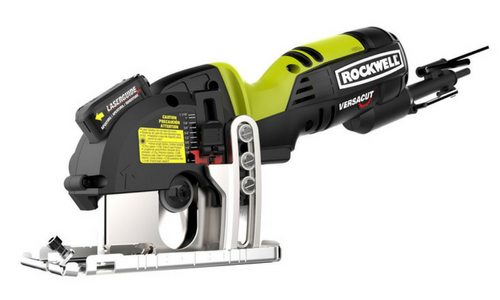
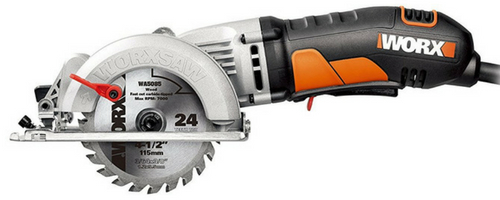
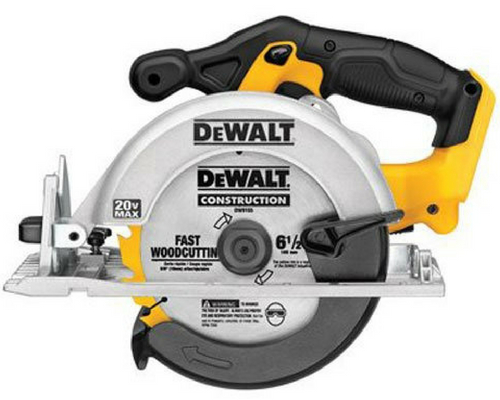
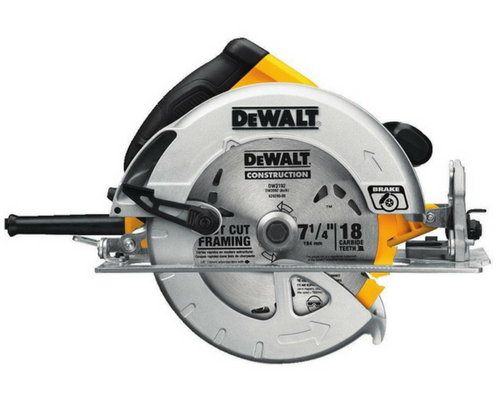
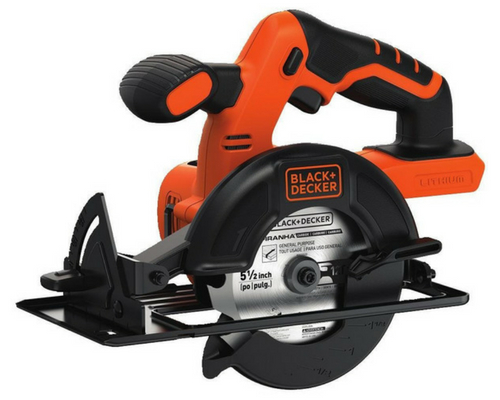
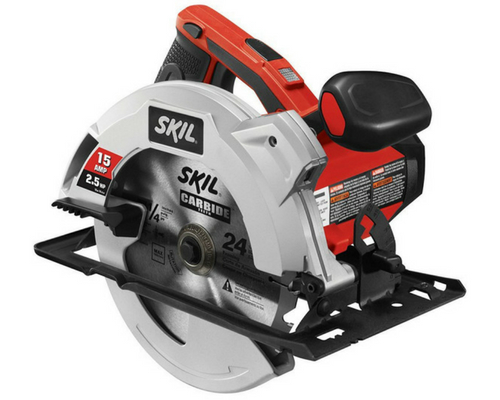
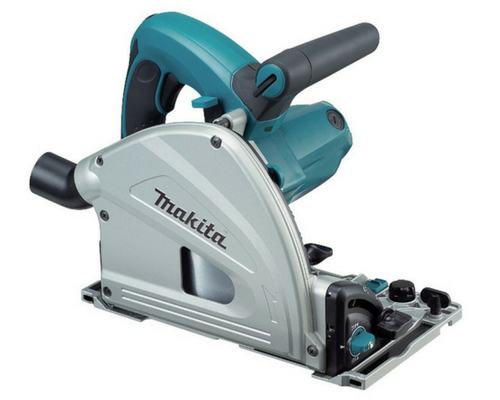
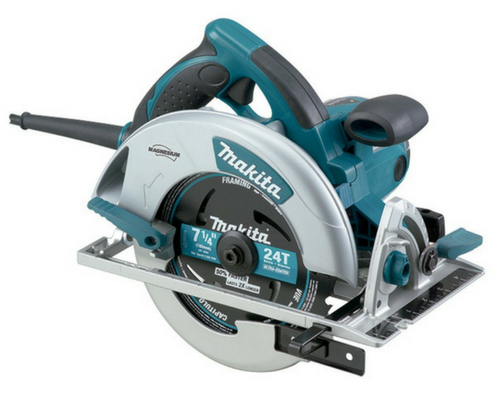
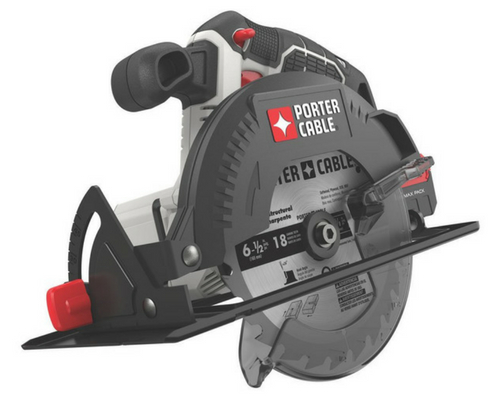
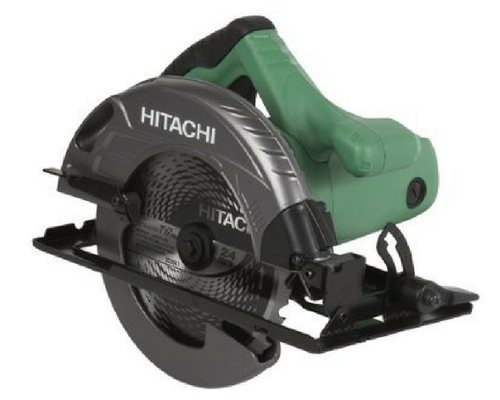





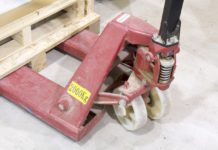





![Best Crochet Hooks for Beginners and Pros [2020 Update] best crochet books](https://www.awebtoknow.com/wp-content/uploads/2018/01/best-crochet-books-100x70.jpg)


